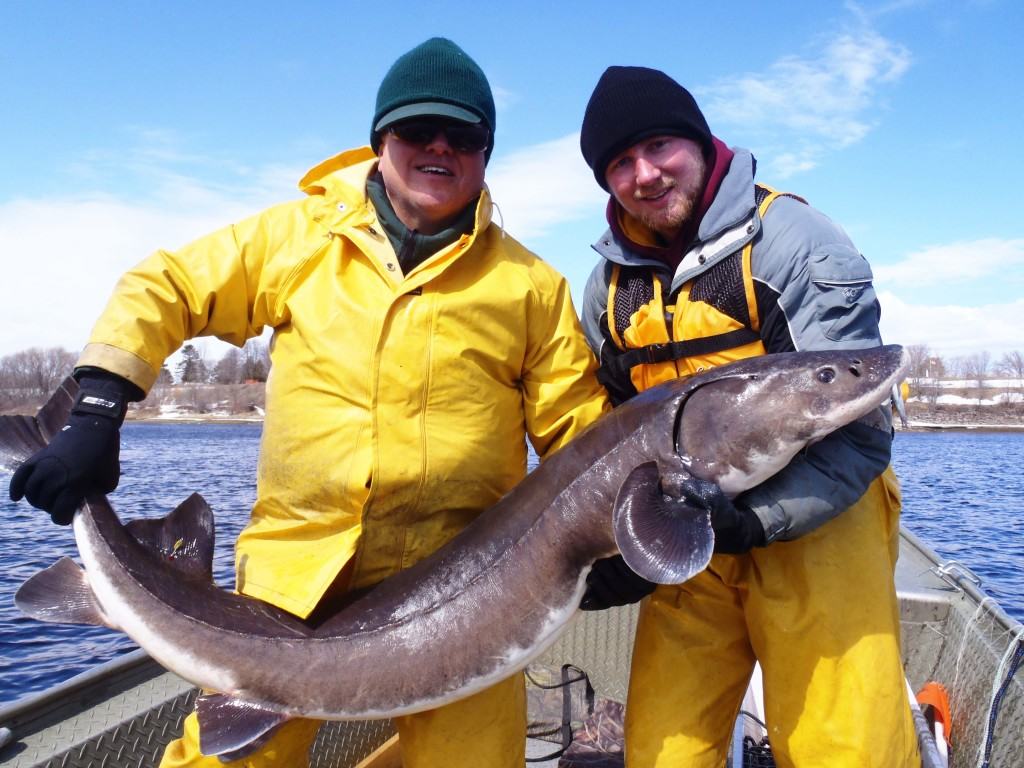
A survey of Lake Sturgeon on the Rainy River and Lake of the Woods has led the Minnesota Department of Natural Resources (DNR) to estimate that there are 56 percent more fish longer than 40 inches as there were a decade ago. An estimated 92,000 of the big fish live in the system today, compared to 59,000 in 2004 and just 17,000 in 1989.
Fishery managers say this means anglers could expect to start catching record-sized fish.
“One day, in the not so distant future, lake sturgeon in the 100-pound class will become a realistic expectation for lake sturgeon anglers,” Drewes said.
The current Minnesota record for Lake Sturgeon was a 94-pound, nearly six-foot long fish caught in the Kettle River in 1994.
A high point
Sturgeon were nearly wiped out in the 19th and early 20th centuries by over-fishing. More than 2 million pounds of fish were harvested each year by commercial fishermen between 1883 and 1893. Then, their recovery was stymied for many years by water pollution.
“This is another high point in a continuing recovery success story,” said Phil Talmage, Baudette area fisheries supervisor with the DNR.
The population estimate is based on an “ambitious” study performed in 2014. Starting last spring, fisheries biologists began netting and tagging lake sturgeon across a study area which included spawning sites on tributaries, 82 miles of the Rainy River below the International Falls dam, Fourmile Bay, and a large portion of Big Traverse Bay on Lake of the Woods.
Biologists returned to the lake with their nets in the summer to recapture sturgeon at randomly selected sites on the southeastern portion of Lake of the Woods, and the entire length of the Rainy River.
Clean water works
Clean water regulations started improving the health of the vast Lake of the Woods and its tributary the Rainy River in the 1960s. The DNR says this was a primary factor in the restoration of the fish. “The recovery of the Rainy River is one of the best examples of how clean water regulation positively influenced angler opportunities in Minnesota,” the DNR’s Drewes said.
Sturgeon are called “living dinosaurs” because the species dates back 150 million years, making it one of the oldest fish species on the planet. Minnesota’s largest fish species, lake sturgeon can grow to longer than six feet and live to 150-years-old. They are also found in the state in the Red, St. Croix, and St. Louis River systems.
Sturgeon fishing regulations on the Minnesota side of Lake of the Woods and the Rainy River allow anglers to keep one lake sturgeon between 45 and 50 inches or one more than 75 inches, per calendar year. A special tag is required. The season is closed from May 16 to June 30, during the fish’s spawning season.

